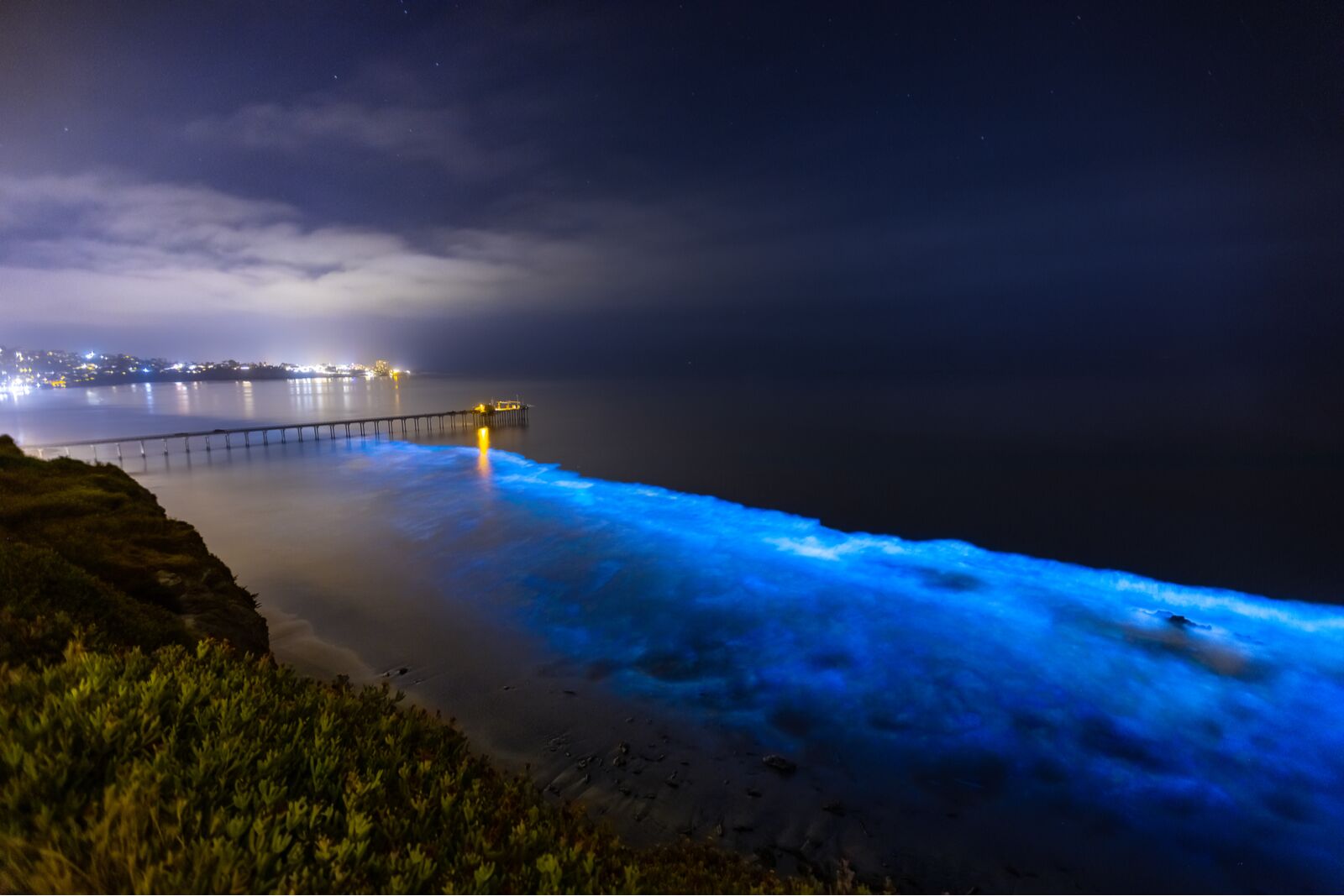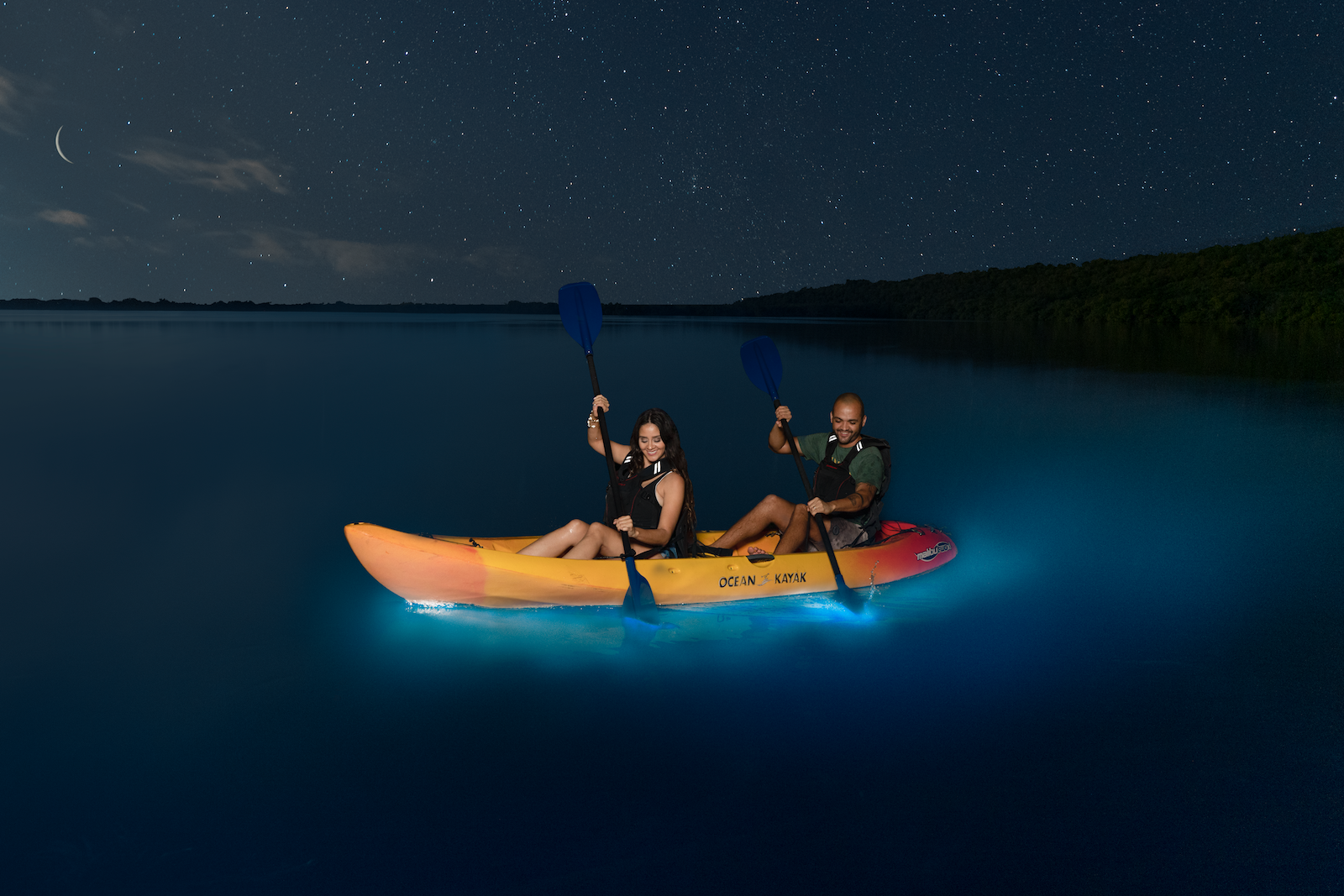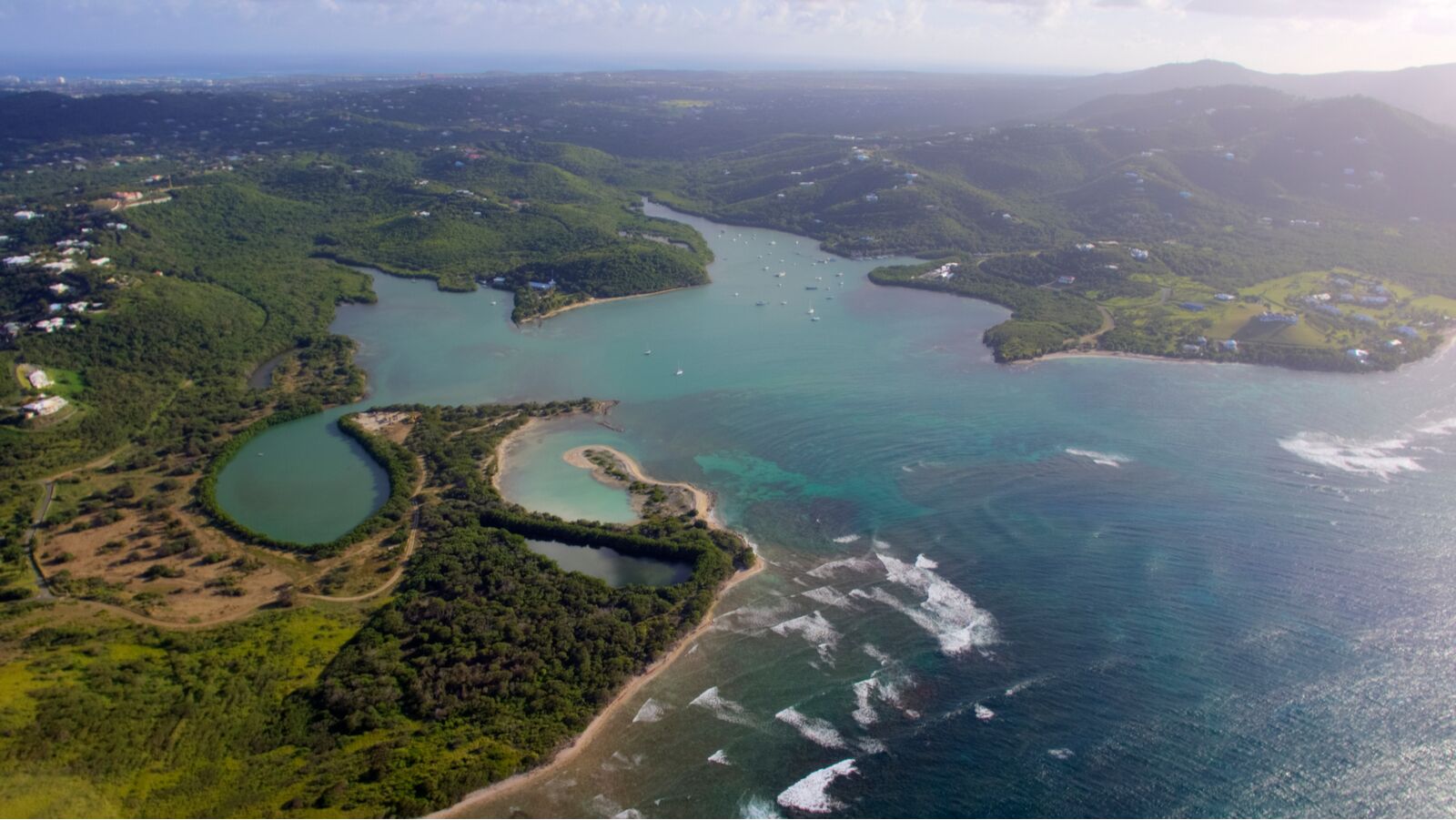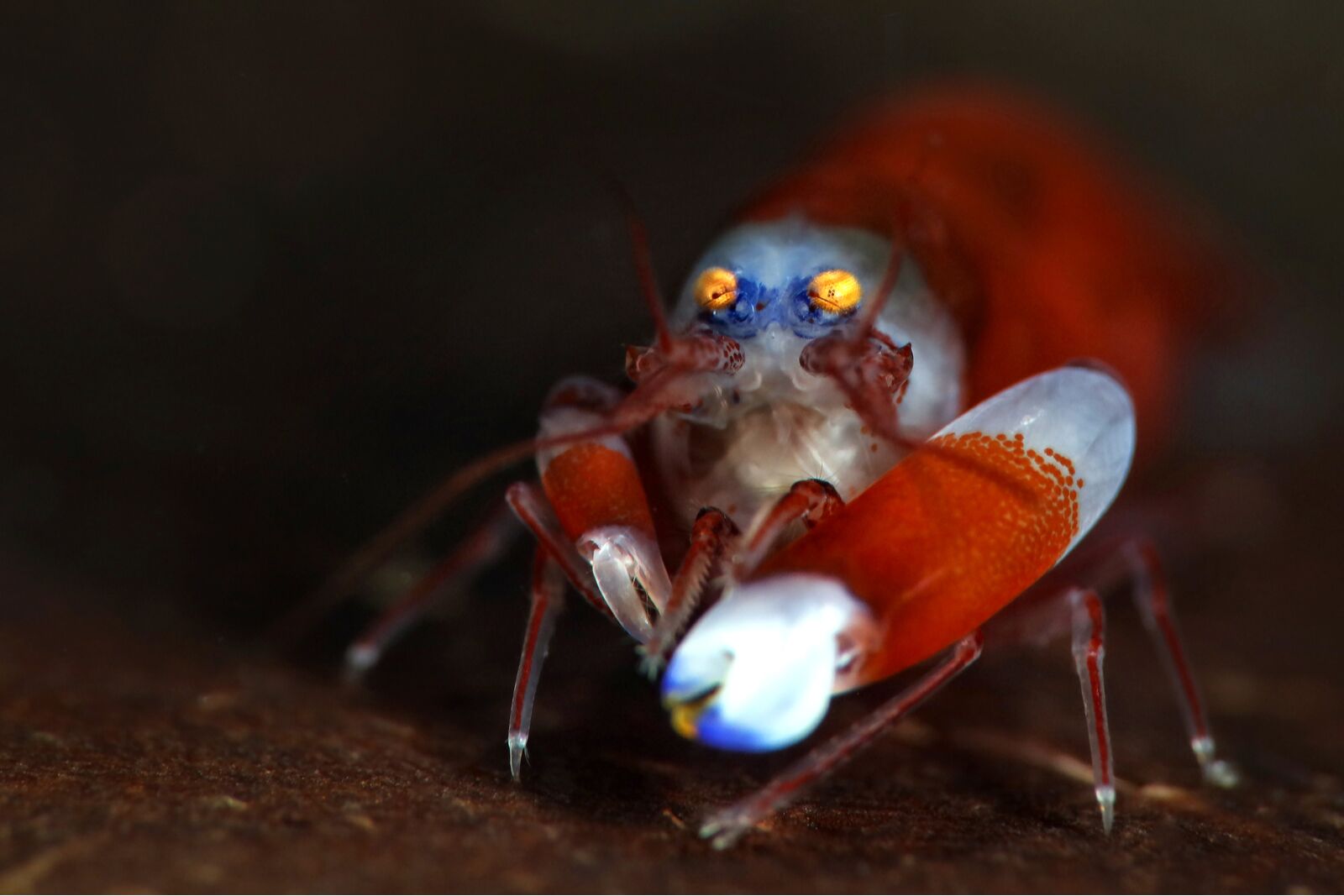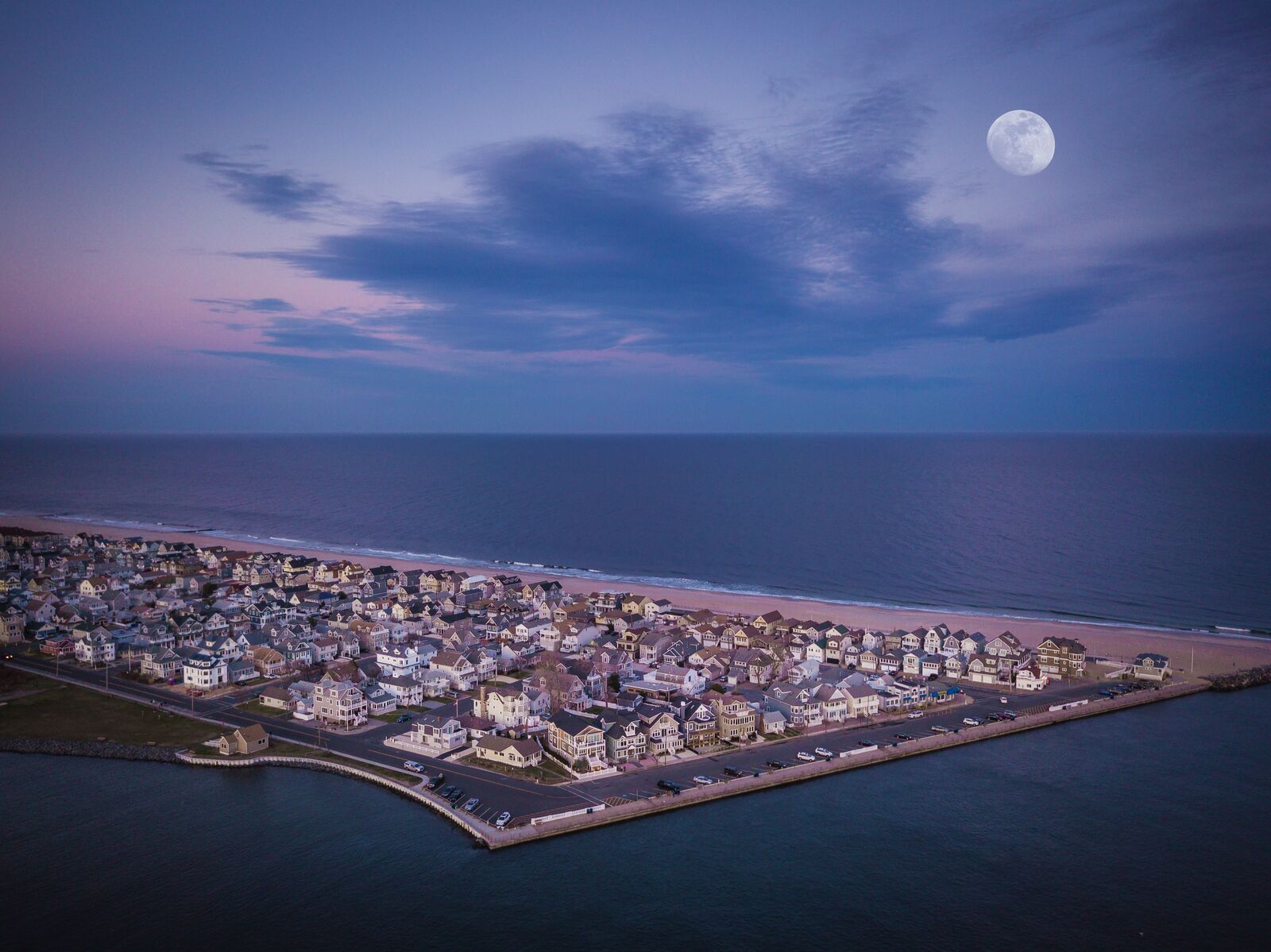In superhero movies, glowing water usually means that the villain poisoned a river with toxic sludge for nefarious reasons – probably to create a whole city of mutants. However, in real life, glowing water is often the result of bioluminescence: a natural phenomenon in which tiny organisms called dinoflagellates light up like sparklers when disturbed or agitated, as they are by waves and currents.
From afar, bioluminescent activity can look like a blue, glowing wave rolling over the surface of a bay or ocean. Up close, it seems as if stars are shining in the water, and if you’re lucky enough to swim through it, the effect is pure magic. The phenomenon happens all over the world, from Maldives to Jamaica. Fortunately, there are bays and beaches in every corner of the US where you can go bioluminescent kayaking or swimming, or even see it from the beach. Here are six places to see bioluminescence that don’t require a passport.

